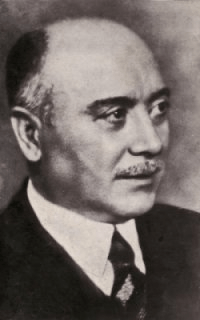Orso Mario Corbino facts for kids
Quick facts for kids
Orso Mario Corbino
|
|
|---|---|
 |
|
| Minister of Economy | |
| In office 5 July 1923 – 1 July 1924 |
|
| Prime Minister | Benito Mussolini |
| Preceded by | Teofilo Rossi |
| Succeeded by | Cesare Nava |
| Minister of Public Education | |
| In office 4 July 1921 – 22 February 1922 |
|
| Prime Minister | Ivanoe Bonomi |
| Preceded by | Benedetto Croce |
| Succeeded by | Alessandro Casati |
| Member of the Senate of the Kingdom | |
| In office 3 October 1920 – 23 January 1937 |
|
| Appointed by | Victor Emmanuel III |
| Personal details | |
| Born | 30 April 1876 Augusta, Sicily, Kingdom of Italy |
| Died | 23 January 1937 (aged 60) Rome, Kingdom of Italy |
| Political party | Italian Liberal Party |
| Alma mater | University of Palermo |
| Profession | Physicist |
| Known for | Corbino effect |
| Awards | Matteucci Medal (1909) Mussolini Science Prize (1933) |
| Scientific career | |
| Institutions | University of Messina University of Rome |
Orso Mario Corbino (born April 30, 1876, died January 23, 1937) was a brilliant Italian physicist and an important politician. He is famous for his work on how magnetic fields affect tiny particles called electrons in metals. He even discovered something called the Corbino effect. Corbino also served as a government minister, handling education and the economy. He was a professor at the University of Messina and the University of Rome. He also guided a group of young scientists known as the Via Panisperna boys, including the famous Enrico Fermi.
Contents
Early Life and Discoveries
Orso Mario Corbino was born in Augusta, Sicily. He was a very bright student. He finished his studies at the University of Palermo when he was just 20 years old.
Macaluso-Corbino Effect
While at the University of Palermo, Corbino worked with a professor named Damiano Macaluso. Together, they discovered something called the Macaluso-Corbino effect. This effect shows how light changes when it passes through certain materials near an absorption line, especially when a strong magnetic field is present. It's about how the light's polarization rotates.
Moving to New Universities
In 1905, Corbino became a professor of experimental physics at the University of Messina. However, a big earthquake hit Messina in 1908. Because of this, he had to move and became a professor at the University of Rome in 1908.
Awards and New Effects
Corbino's work in physics was highly recognized. In 1909, he received the Matteucci Medal for his important contributions to the field. Just two years later, in 1911, he discovered the Corbino effect. This effect is a special type of the Hall effect, which describes how electric currents behave in magnetic fields.
Public Service and Leadership
Besides his scientific work, Orso Mario Corbino was also active in politics and public service. He held several important positions.
Roles in Government
In 1917, he became the president of the Superior Council of Water and Public Works. This council helped manage important resources for the country. In 1920, he became a senator, which is a member of the Italian parliament.
He served as the Minister of Education in 1921. Later, in 1923 and 1924, he was the Minister of National Economy. He was appointed to this role by Benito Mussolini, even though Corbino was not part of Mussolini's political party.
Leading Companies
Corbino also took on leadership roles in major companies. He was the president of the General Electricity Company. He also led the Southern Electricity Company. These roles showed his ability to manage large organizations.
Guiding Young Scientists
One of Corbino's most lasting impacts was his role as the director of the Institute of Physics. He became a mentor to a group of brilliant young scientists.
The Via Panisperna Boys
This group of young researchers was known as the Via Panisperna boys. They included future Nobel Prize winner Enrico Fermi, Edoardo Amaldi, Franco Rasetti, Emilio Segrè, Bruno Pontecorvo, Oscar D'Agostino, Ettore Majorana, and Elena Freda. Corbino created a great environment for them to do amazing research.
Discoveries and Nicknames
Under Fermi's leadership, this team made a huge discovery: slow neutrons. This finding was very important for developing nuclear reactors and even nuclear weapons later on. The students playfully called Fermi "the pope" because he was so smart. They called Corbino "God Almighty" because he was so good at finding money and opportunities for their research.
Founding New Institutes
In 1936, Corbino founded the Institute of Electroacoustics. This institute was part of the National Research Council. It was located in Via Panisperna, the same place where the famous "boys" worked.

